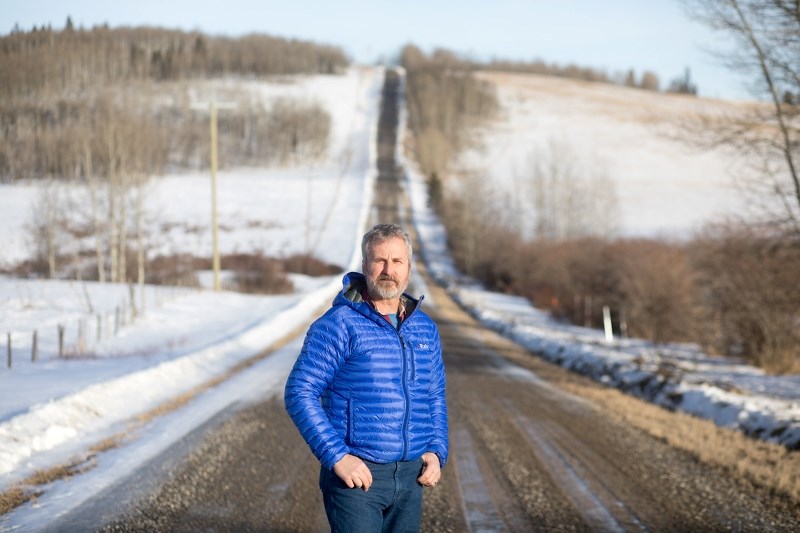A four-day snowstorm wreaked havoc on rural roads, and had some residents questioning the MD’s snow-clearing methods.
While paved roads see a snowplow after major snow events, gravel roads are cleared with a grader. Mike Gallant, deputy director of operations for the MD, said grader operators are trained to leave some snow on the roads to preserve gravel.
“If we try to take all of the snow, then we’re removing the gravel, and that’s fairly costly to the MD, because then you have to re-gravel everything,” said Gallant. “Not only that, if you remove all the gravel and then it thaws out, the road sometimes turns into a muddy, sloppy mess.”
He said reapplying gravel to the road surface costs an average of $5,000 per kilometre of road – about $2,000 for the gravel alone and an additional $3,000 to pay for the trucking, loading, and the grader work.
To help preserve the gravel and save the MD money, he said the graders operators use blade that allows gravel to pass between “teeth,” rather than pushing all of it off the surface. On a second pass, the ice will be cut and gravel stirred back into the snow, he said.
Foothills resident Lee Schneider is not convinced the method works well for his road in the Millarville area.
“I live on the top of a very steep hill, and they’ve got a technique now where they leave a lot of snow on the roads with their blades, but it doesn’t work on a 15 per cent grade because it turns to ice and then it just turns into a bobsled run,” said Schneider.
He said it’s necessary to remove more snow from the road and let the gravel surface - not only for traction but also to help with melting snow, as the dark colour absorbs heat and clears the road naturally in sunlight.
After living in his home for 21 years, he said he’s accustomed to having to get enough speed to make it up the crest of the slippery hill, but many other people have ended up in the ditch. He said he’s mostly concerned about emergency vehicles.
“If you get a truck, like a fire truck or an ambulance, that doesn’t accelerate very quickly and you start going up this hill at 50 or 60, you don’t make it,” said Schneider. “And if you stop, the hill is steep enough you’ll slide backwards, and people go in the ditch all the time because of that.”
He said the MD of Foothills is working with him and his neighbour to resolve the issue, checking the hill as it melts to see whether it ices up and come up with a solution to the issue.
Schneider said he hopes the MD comes up with more than the current plan, which is to have him call in when the road gets bad and have it scraped off again.
“That works great, if you have time,” he said. “But if you have a fire, you don’t have time to call for the roads department to clean the road off before the fire trucks come.”
Gallant said the MD will do whatever it can to find an amicable solution to the problem and ensure the safety of everyone involved. There are many hilly areas in the MD that pose similar challenges after major storms, he said.
MD snow clearing
It can take up to 72 hours to have all the snow cleared from the entire MD of Foothills road network, Gallant said. At that point, crews can revisit problem areas or places where drifting has occurred due to wind.
When the latest storm began on Feb. 3, it lasted through four days and took just as long to clear, he said. Crews finished clearing all the MD roads one week later, on Feb. 10.
The extreme cold early in the week caused some delays, he said.
“It’s very hard on our equipment, and it’s dangerous for our staff, too,” said Gallant. “We had a number of breakdowns, and it kept our support services staff extremely busy repairing machines and making sure we had trucks and graders to run.”
He said in very cold temperatures, the MD’s de-icing materials stops working as well. The brine used on trucks isn’t effective until -10 C or warmer, he said.
This winter has been the worst in three years, he said. The last time MD crews scrambled to keep up with snowfall was 2014, he said.
The MD has a budget of $740,000 for snow clearing each year. The Feb. 3 to Feb. 7 snowstorm cost about $100,000 to handle, he said.
“It’s a significant cost,” said Gallant. “One major storm can take a lot of our budget.”




